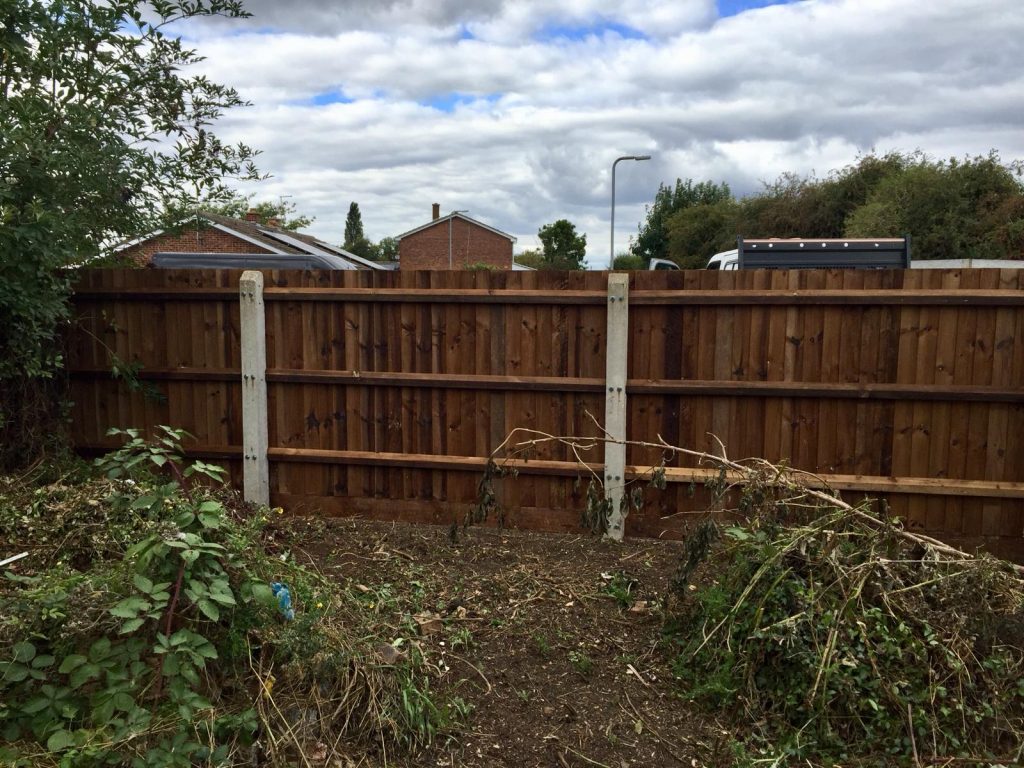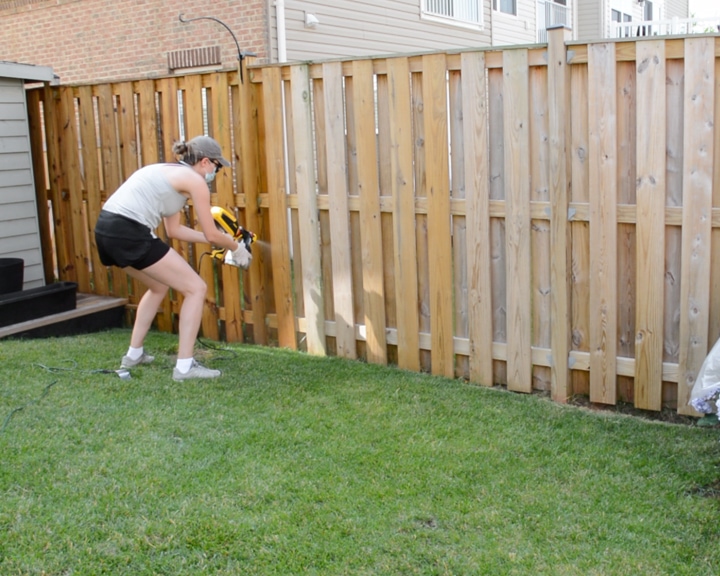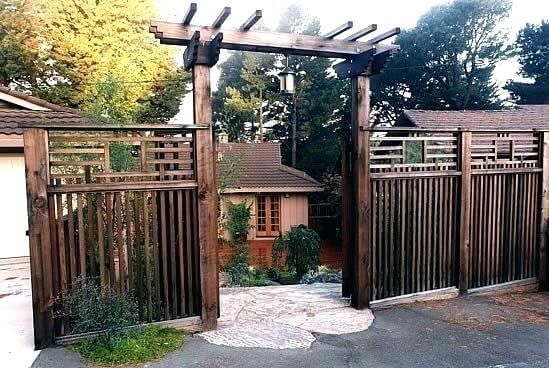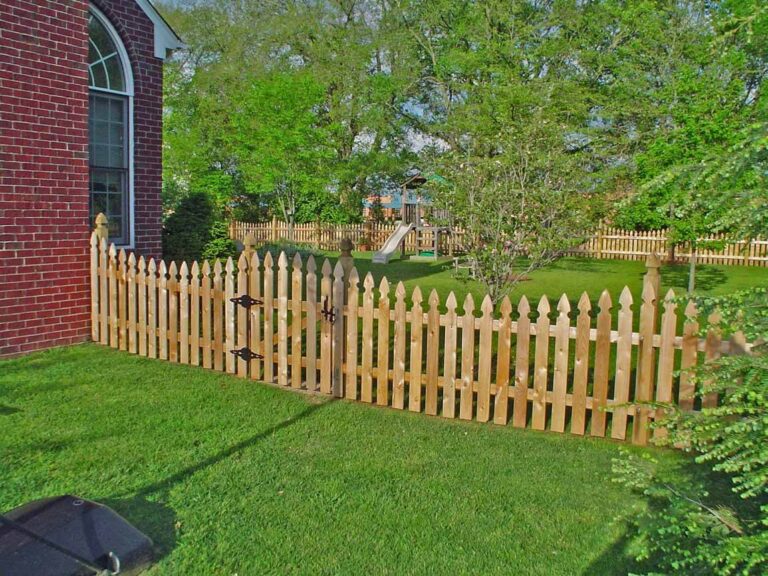Fencing can impact property boundaries by defining and protecting land ownership. It creates a clear, physical barrier, indicating where one property ends and another begins.
Property owners use fences to secure their boundaries, establish privacy, and prevent trespassing.
Additionally, fences can add aesthetic appeal and increase property value. However, disputes can arise over fence placement and maintenance, requiring careful consideration of local regulations and agreements with neighbors.
Before installing a fence, it’s essential to understand the legal implications and potential impact on property boundaries.
Properly managing the installation and upkeep of fences can ensure a harmonious relationship with neighbors and preserve property boundaries.

Defining Property Boundaries
However, it’s not just about legalities; it’s also about ensuring the security and aesthetic appeal of your property.
Fences play a crucial role in this regard. They not only mark your property lines but also enhance security and privacy.
To ensure that you get the most out of your investment, considering professional fence services is key.
With expert installation and high-quality materials, you can optimize security with our fence services, ensuring that your property is well-protected and visually appealing.
This is particularly important in areas where property disputes are common or in urban environments where maximizing the use of space is essential.
Legal Definition
The legal definition of property boundaries is the legally recognized borders that define the extent of a property.
These boundaries are established through deeds, surveys, and local regulations. The legal definition is fundamental in determining property ownership and rights, including the placement of fences and other structures.
Surveying And Demarcation
Surveying and demarcation are vital processes in defining property boundaries. Property owners often engage professional surveyors to accurately determine the exact boundaries of their land.
Through advanced surveying techniques and tools, these professionals identify and mark the precise demarcation points, ensuring clarity and adherence to legal standards.
Significance Of Fencing In Property Boundaries
When it comes to defining and securing property boundaries, fencing plays a pivotal role in delineating the limits and ensuring protection and privacy.
The proper installation and maintenance of fences not only serve as a visual demarcation but also provide security and aid in resolving potential conflicts with neighbors.
Understanding the significance of fencing in property boundaries encompasses various aspects such as boundary demarcation, property security, and neighbor disputes and resolutions.
Boundary Demarcation
Fencing serves as a clear and visible demarcation of property boundaries. It defines the extent of the property, making it evident where one property ends and another begins.
Boundary demarcation through fencing prevents any encroachments and establishes a visual indicator of the property’s limits.
In addition to preventing trespassing, it aids in property planning and development, ensuring that construction or landscaping activities stay within the designated boundaries.
Property Security
Fencing adds a layer of security to the property, deterring unauthorized entry and protecting against potential intrusions.
Robust and well-maintained fences act as a barrier, safeguarding the property from unauthorized access and enhancing the overall security measures.
By limiting access points and providing a physical barrier, fencing contributes to the protection of the property and its occupants, offering peace of mind for property owners.
Neighbor Disputes And Resolutions
Property boundaries often become a source of contention between neighbors. Fencing plays a crucial role in mitigating potential disputes by clearly delineating the limits of each property.
By establishing a clear boundary line, fencing helps prevent misunderstandings and disagreements related to encroachments or unauthorized use of land.
Should conflicts arise, having a clearly defined boundary facilitates amicable resolutions and minimizes the likelihood of prolonged disputes.
Impact Of Fencing On Property Lines
When it comes to property boundaries, fencing plays a crucial role in defining and demarcating the limits of a property.
The impact of fencing on property lines goes beyond mere physical boundaries, as it affects property value, visual appeal, and legal implications.
Property Value
The presence of a well-maintained and sturdy fence can significantly enhance the value of a property.
Fencing provides a sense of security and privacy, which are attractive features for potential buyers or renters.
Properties with clearly defined and aesthetically pleasing fences often command higher prices in the real estate market, making fencing an essential investment for property owners.
In addition, if the fence is in good condition and complements the overall aesthetics of the property, it can contribute to positive first impressions, and ultimately elevate the perceived value of the entire property.
Visual Appeal
A well-designed and properly installed fence can greatly enhance the visual appeal of a property.
Aesthetically pleasing fencing options, such as wrought iron, wooden picket, or vinyl fences, can contribute to the overall charm and curb appeal of a property.
The right choice of fencing material and design can tie in with the architectural style of the property and create a cohesive and attractive look.
Conversely, neglected or unsightly fences can detract from the visual appeal of a property.
Deteriorated or mismatched fences can create a negative impression and potentially lower the perceived value of the entire property.
Legal Implications
The installation and maintenance of fences have legal implications in terms of property boundaries.
Failing to adhere to local regulations regarding fence height, setback, and material restrictions can lead to legal issues and potential fines.
Properly defining property lines through fencing is crucial in preventing disputes with neighbors over boundary encroachments, which can lead to costly legal battles and strained relationships.
Additionally, when selling or buying a property, the presence of a fence can impact the property boundaries agreed upon in the sale contract.
Ensuring accuracy in defining property boundaries through fencing is essential to avoid future conflicts and legal complexities.

Frequently Asked Questions
How Close To A Property Line Can You Put A Fence?
Most areas require a minimum distance of 2 to 8 feet from the property line for fences.
What Is The Fence Law In Texas?
The fence law in Texas sets guidelines for constructing and maintaining fences between neighboring properties.
It outlines the responsibilities of landowners regarding shared boundary fences and the costs involved in installing, repairing, and maintaining them.
Can I Remove Neighbor Fence On My Property In Texas?
Yes, you may remove your neighbor’s fence on your property in Texas, but it is essential to follow legal guidelines and communicate with your neighbor.
Conclusion
In the end, property boundaries and fencing are intertwined. Proper fencing enhances security and privacy while clearly defining property lines.
Understanding local regulations and seeking legal advice can help in making informed decisions.
Clear communication and cooperation among neighbors can prevent disputes over boundaries.
Remember, maintaining fences is essential to avoid legal complications in the future.







